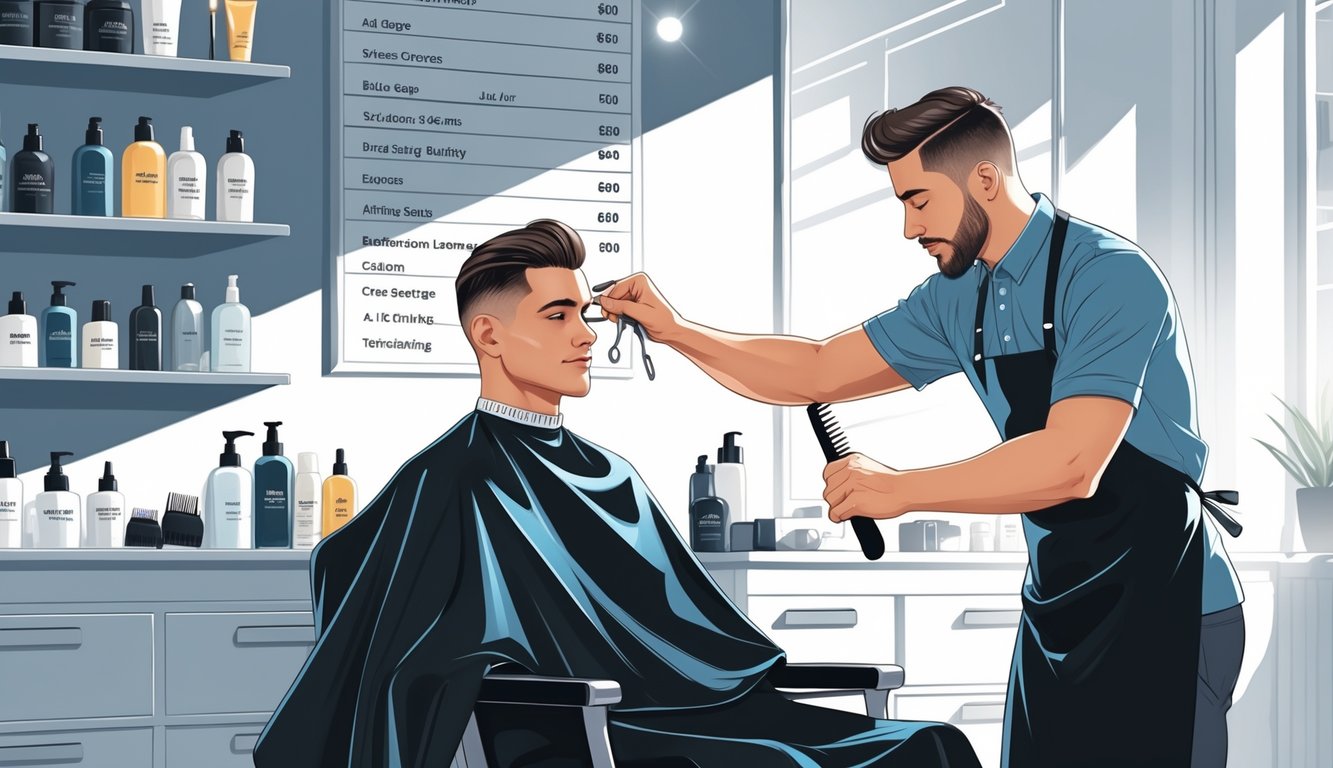
So the last time I tried to get my neckline cleaned up, nobody at the shop batted an eye, but the price? Yeah, it’s creeping up again. I swear these “quick” trims—like a neck taper or edge-up—are the sneakiest price jumps in the whole place. Full cuts? Those get announced, but little touch-ups just… drift upwards. It’s not like I blame them, not entirely—rent climbs, clippers get fancier, and honestly, I’ll pay for a fade that actually looks good. Some stylists on StyleSeat talk about this like it’s just a fact of life.
People don’t riot over a couple bucks, as long as the fade is tight and nobody leaves with a weird neckline. I’ve heard barbers say, “Eh, if you screw up sideburns, they just tip less,” and honestly, that checks out. The whole pricing thing is this endless loop—add some value, toss in a quick shave, maybe push some aftercare stuff, especially if some guy’s waving around a celebrity Instagram pic. I’ve seen barbers on SQUIRE admit they’ll scope out rival shops before they hike up the price for “quick fixes,” but only after a test run to see who even notices.
Meanwhile, I still forget my own appointments and end up paying extra for a last-minute slot. Maybe that’s the trick? Just nudge the price up a bit here and there, and people like me just rationalize it by comparing the shop down the block. Next thing you know, “just a neckline” is as routine as beard oil or whatever sneaker drop just happened. I mean, does anyone track this stuff besides the accountant? I sure don’t.
Understanding the Men’s Grooming Request That Impacts Pricing
Did anyone expect a single men’s grooming request to make barbers all twitchy about their price lists? Because, here we are—hidden upcharges, awkward explanations, and always some “technical” reason. Never just “because.” That’d be too easy.
What Makes This Grooming Request Unique
You sit down, do the awkward mirror glance, and say, “Just a skin fade. Not too short, but, you know, clean.” Boom—suddenly it’s a whole production. Not like buzzing your head or a five-minute beard trim. Fades, especially skin fades, are this weird status thing. Guys want that perfect gradient, like some kind of optical illusion. Miss a spot, and the whole thing’s ruined.
And while UK men’s cuts average £14, a legit skin fade or some wild mustache detail? Barbers charge more, and honestly, I get it. Beard trims are quick, shaves take forever, and fades? They’re precision work. Clean blades, different guards, all for that bald fade. Nobody cares—unless you screw it up.
Why Barbers Pay Special Attention to This Request
Clients stare at every millimeter. “Is it even? Are the lines sharp?” If you botch a fade, there’s no hiding it. No amount of product or combing saves you. Mess up and you’re spending half your afternoon fixing it. Shop owners complain about rent, tools, cleaning everything for face shaves—there’s even this running joke: “A minute on a fade costs more than a beard trim.”
Surveys say over 60% of salons have more guys asking for these finishes, with 23% of customers now men. Every barber I know keeps track of how long fades take compared to regular cuts. It’s not personal, it’s just exhausting. Some old-timer told me, “Even the steadiest hands can’t rush a real zero fade.” True. Mastery costs more, but nobody wants to hear that when they’re pointing at a stray whisker.
How Barbers Quietly Adjust Prices
Nobody handed me a guide to pricing. It’s just a mess of scribbled notes, a fridge magnet with numbers that change every month, and that’s it. Price goes up a buck or two? Who notices? Every guy wants a “quick trim but extra detail,” like I haven’t heard that a hundred times. These changes don’t just happen—there’s a whole dance to it.
Behind-the-Scenes Pricing Decisions
Someone once asked how I decide what to charge for a beard sculpt or a taper. I mean, what, do they think I pick numbers out of a hat? I watch for clues—like the price list taped up next door, or the supply invoice I keep losing.
Razors cost more, again, and suddenly it’s not just the cut, but the fancy products I have to restock for those “deluxe” types. I can’t rant to every client about insurance or rent, so I just nudge the price up. Most regulars don’t care—unless it’s a big jump.
Ever see someone try to erase an old price without getting caught? I have. I’ve done it. Sometimes I just mumble the new price if anyone asks. It’s not hiding, it’s just… avoiding drama. Nobody wants to argue with a barber holding a straight razor at their neck.
Factors Influencing Price Changes
Blame inflation, sure, but what about when your towels cost double and your favorite pomade vanishes? Pricing for shape-ups, razor fades, whatever, changes whenever the market freaks out—like gas stations fiddling with the sign at midnight.
Story time: Three weeks ago, I upped my price list—not just because costs went up, but because the shop two blocks over started giving out free Wi-Fi and drinks. Suddenly, I’m not “competitive,” so I add a neck massage, bump the price, and watch to see if anyone flinches.
Nobody writes memos about new rates. Most clients don’t notice unless it’s a big jump. A solid pricing strategy is just keeping an eye on the neighborhood, reading reviews, and sometimes losing a penny-pincher to the walk-in chain.
The Role of Experience and Reputation
It’s wild—same city, two barbers, one charges $30, the other $45, and everyone just acts like that makes sense. After a decade doing this, I’ve realized people pay more if you’re good. Guys take selfies, tip better, book ahead. Meanwhile, the new guys cut corners and spend months explaining why their fades aren’t quite right.
I raise prices when my reputation goes up, even if I grumble about it. That “Master Barber” certificate? Not just a piece of paper. It lets me charge more, especially if I get a shoutout or a bunch of requests from LinkedIn. If you’ve spent years perfecting fades, people just expect you’ll cost more than some kid learning the basics.
Here’s the thing: regulars want miracles, but they’ll accept price bumps if it means they don’t have to gamble with their hairline. My old boss used to say, “Raise the price, raise expectations, raise respect.” He never updated his own prices, but he wasn’t wrong.



